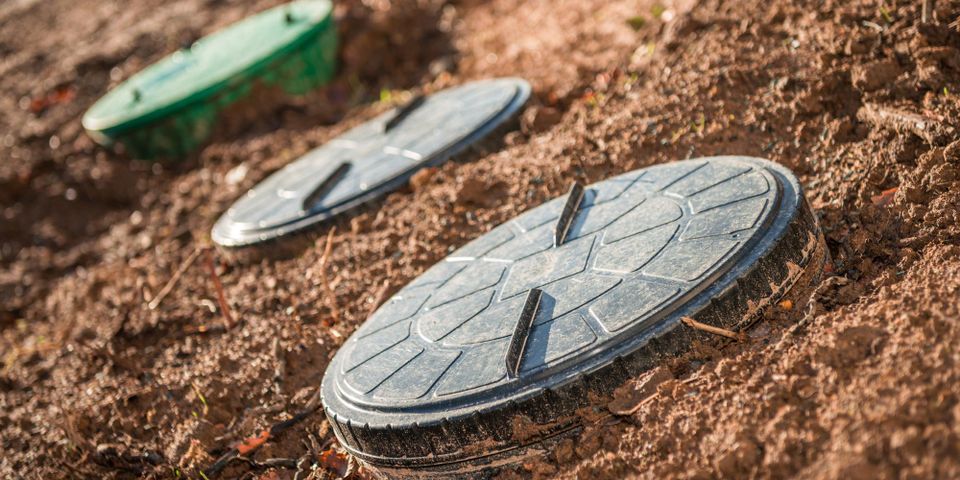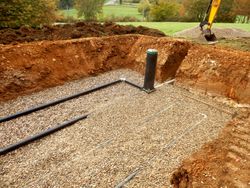
For homeowners and businesses not connected to municipal sewer lines, a septic system ensures the proper removal of wastewater from the property. Here is a closer look at the interrelated parts that make up this system.
4 Key Components of a Septic System
1. Pipes
The pipes leading from your home to the septic tank are the first part of your system. As such, homeowners should be mindful of what goes down their drains. Grease deposits, hair, and food debris can clog pipes and keep wastewater from reaching the tank.
2. Septic Tank
The most well-known part of the septic system, these watertight containers are buried underground and are usually constructed with fiberglass. While in the tank, solid waste settles to the sludge layer, while oils float to the upper scum layer. Screens, compartments, and specialized outlets keep this waste trapped inside while the remaining water passes on to the drain field.
 3. Drain Field
3. Drain Field
Partially treated wastewater is sent to the drain field through a series of perforated pipes. These pipes allow the water to release in a way that doesn’t overwhelm the soil. However, failure to pump the septic tank regularly can allow waste to reach the drain field, compromising the system and potentially the surrounding environment, as well.
4. Soil
Soil is the final part of your wastewater system, as it helps remove any remaining bacteria before the water reaches the groundwater supply. The soil also absorbs any nutrients that may have been present.
If you need help caring for your septic system, contact Cox’s Septic Service in Corbin, KY. Their team draws on years of industry experience to provide reliable and affordable septic tank pumping and maintenance and help you extend your system’s life span. To learn more about what they can do for you or to schedule service, visit them online or call (606) 528-4782.
About the Business
Have a question? Ask the experts!
Send your question

